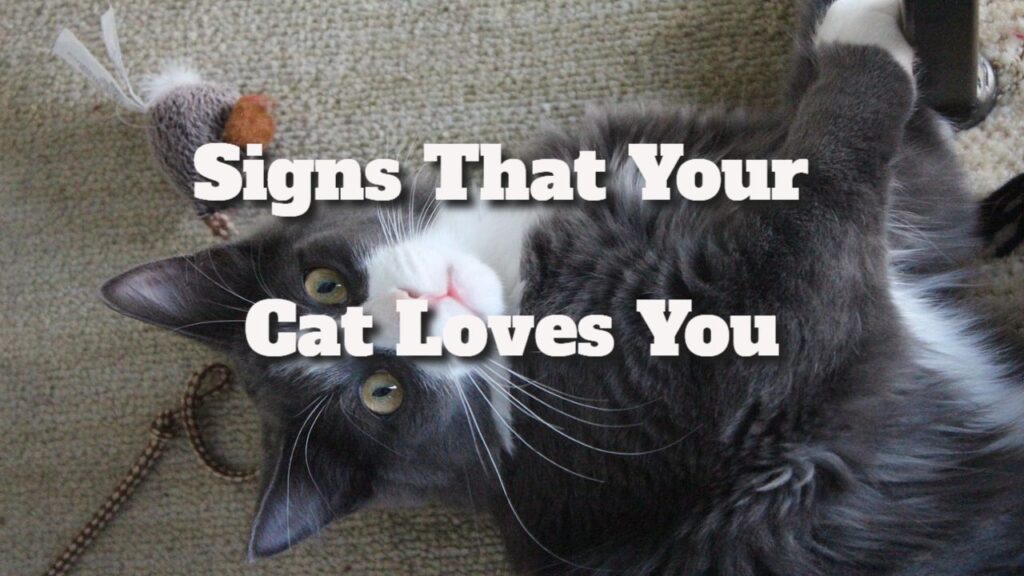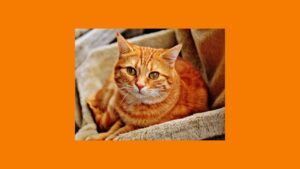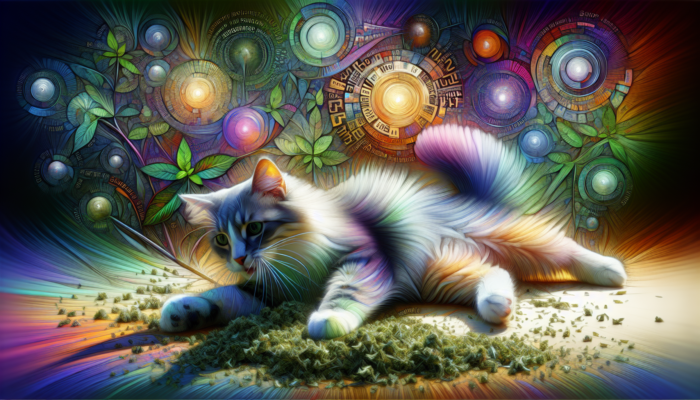Signs That Your Cat Loves You
Contents
- 1 Signs That Your Cat Loves You
- 1.1 Why do cats enjoy catnip?
- 1.1.1 What is catnip?
- 1.1.2 How does catnip affect cats?
- 1.1.3 Is catnip terrible for cats?
- 1.1.4 Why do cats prefer catnip?
- 1.1.5 Fun toys for cats
- 1.1.6 Kicker toys
- 1.1.7 Toys used for pouncing
- 1.1.8 Catnip toys
- 1.1.9 Catfishing rod toys
- 1.1.10 Cat Puzzle Toys
- 1.1.11 Electronic Cat Toys
- 1.1.12 Scratching and climbing cat toys
- 1.1.13 Handmade cat toys
Signs That Your Cat Loves You
Our feline pals don’t always express their feelings, so how can you know if your cat loves you? Pets have their ways of expressing their feelings.
Chances are, your cat is your number one hidden admirer! Look for these clear signals of feline adoration.
Grooming
Many studies imply that your feline buddy regards you as a family member, namely as an over-sized cat (who isn’t particularly adept at hunting). If she licks or grooms you, it’s usually a good sign that you’re a valued member of her family.
Biting behaviour is a playful way for kittens to demonstrate affection, and your cat may exhibit the same conduct towards you. However, if those sharp little teeth begin to hurt, do not respond negatively, as this may confuse her. Instead, distract her attention with a toy or activity.
Eye contact
If you are wondering how to tell if your cat loves you, look for indicators that she is entirely at ease with you. Cats see eye contact with a stranger, whether feline or human, as menacing. If she is glad to stare you in the eyes, especially if she blinks slowly, it means she has warmly embraced you as one of her own.
Headbutts
Cats mark their territory using scent glands on their faces and heads. So, by headbutting you or rubbing her chin against you, your kitty friend affectionately identifies you as hers.
Generous ‘gifts’.
If your cat brings you prey she has caught, she may act as a teacher, as she would train her kittens to hunt. Because she has never seen you catch your food, she may assume you are a family member who needs to be taught!
Tall tails.
A cat’s tail can indicate her feelings and help you comprehend her body language. When your cat approaches with her tail lifted high and the tip twitching from side to side, take this as international cat language for ‘I’m nice, and I like you’.
Meowing
Adult cats rarely meow at each other. Instead, they frequently use their vocalisations to communicate with others. And, like us, a cat is unlikely to ‘speak’ to someone she dislikes. If your cat meows a lot (even when she’s well-fed and warm), she may connect with you out of affection.
Kneading
There are numerous ideas as to why cats knead your knee, but scientists say it is a practice kittens learn to promote their mother’s milk production. By practising this practice on you, your cat again demonstrates that she accepts you as a family member. If your pet enjoys kneading, consider placing a thick blanket between you and her busy paws.
They are sleeping on you.
Your cat’s eagerness to nap on your lap is a powerful indication of her affection for you. As a natural predator, your cat dislikes feeling vulnerable, and he is especially suspicious about feeling this way while sleeping. Sleeping on you exposes her most vulnerable side while also demonstrating her faith in you.
Presenting her behind
Cats recognise one another through scent; therefore, sniffing one other’s behinds is the equivalent of a very personal handshake. While extending her tail to your face may appear like a backhanded compliment, it is a message that you are one of her most trusted confidants.
Why do cats enjoy catnip?
As a cat owner, you understand how vital it is to keep your cat entertained and provide plenty of playtime opportunities to improve their lives. A wide selection of snacks and playthings are also available. Grooming them regularly and showering them affectionately may allow you to indulge your cat with catnip sometimes.
What is catnip?
Catnip is a herb that originated in Asia. It has a distinct, almost minty aroma because it is a member of the mint family. It is currently planted worldwide and thrives in gardens and window boxes.
This herb is known for its effect on cats, which is how it got its name. The Latin name for catnip is Nepeta cataria. Catnip includes nepetalactone, a molecule that repels insects. It also attracts cats since its odour resembles cat pheromones.
Dried catnip is widely available at pet shops around the United Kingdom. Catnip, like all dried herbs, becomes stronger and more potent during the drying process, so if your cat is susceptible to catnip, it may strongly influence them.
How does catnip affect cats?
Your cat’s sense of smell is incredibly acute; thus, the scent of catnip is usually appealing to them. When the catnip plant is pressed or crushed, more of the smell is released, encouraging a cat’s active behaviour. The odour is comparable to a pregnant cat’s, so cats sometimes go crazy when they smell it.
Catnip, on the other hand, can occasionally have a subtle or no impact on cats.
Is catnip terrible for cats?
Catnip is typically considered safe for cats. It grows spontaneously, is widely available, and has short-term effects. Cat owners may easily limit the amount of catnip their cat has access to, and there is no way for a cat to overdose on it.
Cats do not usually desire to eat catnip. They want to smell it and rub it all over themselves. If they eat any suddenly, it may cause an upset stomach. It is a good idea to keep an eye on your cat in this condition and contact your veterinarian if you have any concerns.
As with other stimulants, you can have too much of a good thing. Catnip can cause cats to become overstimulated and aggressive. They may bite you, scratch you, zoom around, or grow disturbed. In this situation, remove the catnip and let your cat relax.
If you wish to offer your cat catnip, do so gently and in modest amounts. Please don’t give them too much at once; approach it as a nice treat rather than something to use daily.
Why do cats prefer catnip?
Different cats enjoy catnip for various reasons. There is evidence that particular cats are genetically predisposed to prefer catnip. Depending on their genetic makeup, some cats are unconcerned about catnip and may sniff it before walking away. Others immediately grow wild and yearn for more.
Aside from genetics, the aroma of catnip resembles a pregnant cat. When they smell it, they experience a surge of hormones, influencing their behaviour. Cats adore catnip because it makes them feel euphoric.
You may see zoomies, episodes where your cat becomes hyperactive, runs around the room, and generally acts wild. Alternatively, your cat may react by becoming asleep, continuously rolling in the catnip, rubbing their face on it, or even stretching and relaxing into a cat nap.
Fun toys for cats
Cat toys stimulate our pets’ minds and are especially useful for keeping indoor cats active; here, we’ve rounded together some of the most popular sorts.
Cat toys aren’t just for kittens; given the opportunity, most adult cats enjoy stalking, pouncing, and playing with toys. Giving your cat a choice of toys for regular play sessions can help keep them healthy and happy. This is of the utmost importance for housecats since they require cerebral exercise, making them more likely to gain weight.
Varied cats have varied play patterns, so while some enjoy catching balls, others prefer toys that encourage climbing or jumping. Enjoy exploring with some of the top cat toys we’ve compiled below to determine your feline’s fave!
Kicker toys
When some cats ‘catch’ a toy, they do a famous ‘bunny kick’ with their rear legs. The most excellent toys for encouraging cats’ natural hunting behaviour and keeping them physically active are cat kickers, kick bags, and kick stick toys. You may get the same effect with a little soft toy. Throw the kicking toy across the floor for your cat to chase and pounce, then watch them grasp and attack it!
Toys used for pouncing
As instinctual predators, a cat’s attention will be drawn to any moving objects that scamper across the floor like prey. Some cats enjoy little balls, while others prefer plush toy mice or birds to practise their pouncing skills. Don’t be shocked if your cat starts trotting about with their toy once they’ve ‘caught’ it!
However, think carefully before purchasing a cat laser toy. While laser pointers are initially entertaining for cats to chase, they can become dissatisfied if they never ‘catch’ the laser. If you use a laser toy, keep play sessions brief and give your cat a little toy to capture and ‘kill’ at the end.
Catnip toys
When cats sniff the catnip plant (Nepeta cataria), a chemical component induces a sensory response in their brains. As a result, numerous catnip toys for cats are available (with differing levels of quality), including kicking and pouncing toys flavoured with the herb, loose catnip that can be sprinkled on scratching posts, and even catnip bubbles.
However, the catnip plant works very well. Furthermore, growing and available in most garden centres and nurseries is simple. A pesticide-free plant benefits pollinators as well!
Catnip’s stimulating impact typically lasts around 10 minutes before wearing off. When not in use, store catnip toys in a sealed plastic bag or opt for toys with refilling catnip pouches.
Cats react differently to catnip, displaying behaviours ranging from energetic (for example, rolling around) to passive (for example, holding a sphinx-like pose). At the same time, some studies estimate that up to 32% of cats may not respond at all. Gender, neuter status, and age can all influence a cat’s behaviour, with adults responding more aggressively than younger cats.
Catfishing rod toys
Toys fastened to the end of a piece of thread on a short ‘fishing rod’ are ideal for stimulating running and jumping, similar to when your cat attempts to capture birds or insects.
Chasing a toy is far friendlier to local wildlife, so set aside time for interactive play with catfishing rod toys. Never leave your cat unsupervised with string toys, as they may become entangled and injure themselves.
Cat Puzzle Toys
Cat puzzle toys and mazes that involve food are excellent ways to keep your kitty cognitively active. Puzzle feeder toys for cats may include levers or compartments that your cat must press, push, or raise to gain access to a treat, or they may need to be moved across the floor to release food.
Put some of your cat’s daily dry food intake in one of these puzzle toys and consistently demonstrate how to use it for a few minutes before standing back and letting them try. This helps lessen the likelihood of becoming bored or frustrated with the toy. It’s best to start with something simple until they get the feel of it, then gradually increase the difficulty level.
Electronic Cat Toys
There are many entertaining electrical toys to keep your cat engaged, ranging from remote-controlled mice to fluttering feathers that come out from beneath a cover, testing their reflexes.
Electronic toys for cats can be more expensive than other playthings, but they make excellent birthday or Christmas gifts. Remember that devices should not be used as a replacement for regular, supervised playtime with your cat.
Scratching and climbing cat toys
Scratching and climbing are two fairly natural cat activities, so if your cat is clawing at your furniture or climbing on your bookcase, they’re trying to tell you something.
Treat them to a cat climbing toy or tree with elevated hiding spots and plenty of scratching surfaces. When your cat is not playing, they may climb into their cat tower and take a nap where they feel safe.
Handmade cat toys
Whatever cat toys your pet prefers, rotate them regularly to keep them interested. Purchasing various toys for your cat might, of course, become quite pricey!
The good news is that most felines will enjoy a homemade cat toy just as much as a store-bought one. Scrunch a piece of foil or paper into a ball for your cat to bat around the house, or create a kicker toy from old socks.
You could also use ordinary objects to construct your DIY cat puzzle toys. At its most basic, this could entail spreading dry food inside an empty egg box for your cat to scrape out or placing food inside a cardboard toilet roll and folding the tube over the ends.
And don’t underestimate the joy that a simple cardboard box may provide! Fill a box with leaves, sprinkle some treats, and let your cat go on a treasure hunt.





when they feel like engaging in a staring contest, it often leads to a very awkward standoff. But with you? Your cat is basically saying, “I trust you so much that I will expose my adorable little soul right now.” If her slow blinks make you feel like you’re at the receiving end of a feline Euphoria Award, congratulations, you’ve earned her affection!
You’ve brought up a really interesting point about the dynamics of a staring contest with cats. It’s fascinating how something as simple as a glance can shift the entire tone of our interactions with them. When a cat locks eyes with you, it can feel like a moment loaded with meaning. They have a way of expressing trust and vulnerability that’s uniquely theirs, which definitely adds layers to our bond with them.
You bring up an interesting point about the dynamics of that staring contest. It’s true—when a cat locks eyes with you and offers those slow blinks, it’s a unique exchange. It’s like they’re laying their cards on the table, showing trust in a way that feels almost sacred. But it also makes me wonder about the nuances of their body language beyond those blinks.
You’ve captured the essence of that feline gaze perfectly. Cats do have this unique way of communicating through their eyes. When they slow blink, it’s like they’re sharing a moment of vulnerability with us, a kind of silent dialogue that says, “You’re safe here.” It’s fascinating how this nonverbal exchange deepens the bond between pets and their humans.
You’ve touched on something really profound with the way cats communicate through their eyes. That slow blink is like a secret code, isn’t it? It’s interesting how a simple gesture can convey so much warmth and trust, bridging the gap between two species. When I see a cat blink slowly at me, I can’t help but feel a little spark of connection. It’s as if they’re saying, “I see you,” in a world where so many interactions can feel rushed or distracted.